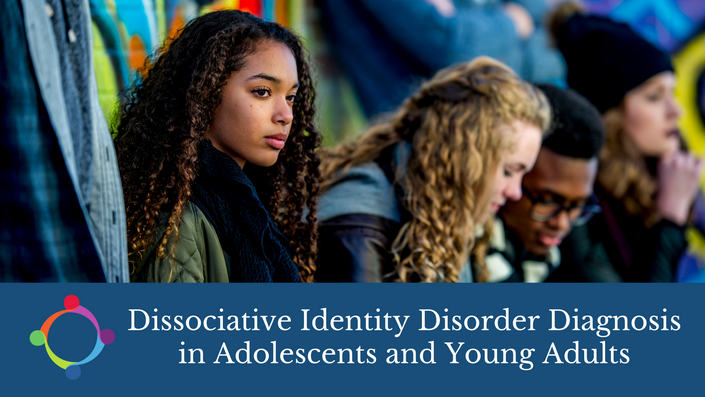About this presentation
“Neurodiversity” is the fact that there are inherent differences in how human minds perceive and interact with the world. The neurodiversity paradigm arose in the 1990s but has been increasingly a focus in the mental health space, especially concerning autistic individuals. That is, this framework rejects the idea of one “normal” or “correct” style of neurocognitive functioning and to stop pathologizing autistic ways of thinking and behaving.
The neurodiversity paradigm of autism argues that problems in living stem, in large part, from the societal exclusion autistic people face. This aligns with research that supports autistic mental health is reflected by acceptance and quality of support given, not necessarily with “symptom” severity. However, much of our understanding and interventions in psychology reflect a medical model of autism spectrum disorder, which is inherently deficit focused, therefore often increasing misunderstanding of autistic clients and barriers to them receiving care. From an ethical lens, practitioners should increase their understanding of neurodiversity in order to increase accessibility for a specific population.
This presentation will focus on neurodiversity-affirming principles for clinical practice and attendees will learn specific skills to bring to evidence-based treatments with autistic children and adults. However, it should be noted that there is not a “one-size-fits-all” approach and autistic clients have their own needs. The goal is to learn fundamental principles and gather tools to implement in the best way for individual clients.

What you'll learn
At the conclusion of this presentation attendees should be able to balance professional ethics with neurodiversity affirming principles with working with autistic clients and use neurodiversity affirming skills to support enhanced relationships and treatment outcomes for autistic clients.
Learning Objectives:
- Describe how neurodiversity affirming principles align with professional ethics
- Conceptualize cases from a neurodiversity paradigm for autism using strengths-based language
- List at least 3 ways to enhance the therapeutic relationship with autistic clients using neurodiversity affirming principles
- Describe at least 3 skills to incorporate into popular evidence-based treatments in therapy with autistic clients
About your teacher
Laura Rowley, Ph.D., licensed clinical psychologist, obtained her doctorate from Wayne State University. She completed her APA-accredited internship and postdoctoral fellowship at Primary Children’s Hospital. Laura is currently the Program Director for the Assessment and Testing Team at Utah Center for Evidence Based Treatment. Her expertise in assessment includes assessment of autistic children and adults and treatment of coinciding problems in living.

CE Approval
UCEBT is approved by the American Psychological Association to sponsor continuing education for psychologists. UCEBT maintains responsibility for this program and its content.
Additionally, 2 hours of this presentation is approved for general and 1 hour is approved for ethics home-study CE credit through UPA, NASW-UT, UAMFT, and UMHCA for a total of 3 credit hours.
Program Notices
Three hours of home-study CE credit is available for attendees who participate in this entire program. Laura Rowley, Ph.D. and UCEBT have not received any commercial support for this program or its contents and will not receive any commercial support prior to or during this program. For additional information or if accommodations are needed, please contact Jennifer at [email protected] or (801) 419-0139.
Conflicts of Interest: None.
Commercial Support: None.
Accuracy, Utility, and Risks Statement:
This program discusses ethical codes in clinical practice for psychologists and social workers. It may not include information on all mental health professions. Misapplication of the materials, or errors in the materials, could result in non-compliance with applicable laws or ethics code. This program discusses strategies for enhancing mental health outcomes in autistic populations based on current research. Presenters are not responsible for participants' application of misapplication of intervention strategies, nor patient outcomes for any participant. Presenters encourage further study and training.
References
Baron-Cohen, Simon. “Editorial Perspective: Neurodiversity - a Revolutionary Concept for Autism and Psychiatry.” Journal of Child Psychology and Psychiatry, vol. 58, no. 6, 19 May 2017, pp. 744–747, https://doi.org/10.1111/jcpp.12703.
Hunt, Adam D., and Tanya L. Procyshyn. “Changing Perspectives on Autism: Overlapping Contributions of Evolutionary Psychiatry and the Neurodiversity Movement.” Autism Research: Official Journal of the International Society for Autism Research, vol. 17, no. 3, 17 Jan. 2024, pubmed.ncbi.nlm.nih.gov/38233966/, https://doi.org/10.1002/aur.3078.
Monteiro, M. (2010). Autism conversations: Evaluating children on the autism spectrum through authentic conversations. Western Psychological Services.
Pantazakos, T., & Vanaken, G.-J. (2023). Addressing the autism mental health crisis: The potential of phenomenology in neurodiversity-affirming clinical practices. Frontiers in Psychology, 14. https://doi.org/10.3389/fpsyg.2023.1225152
Singer, J. (1998). Odd people in: The birth of community amongst people on the autistic spectrum: A personal exploration of a new social movement based on neurological diversity. Sydney: Faculty of Humanities and Social Science University of Technology, Sydney.
Walker, Nick. “NEURODIVERSITY: SOME BASIC TERMS & DEFINITIONS – NEUROQUEER.” Neuroqueer, Nick Walker, 2014, neuroqueer.com/neurodiversity-terms-and-definitions/.


